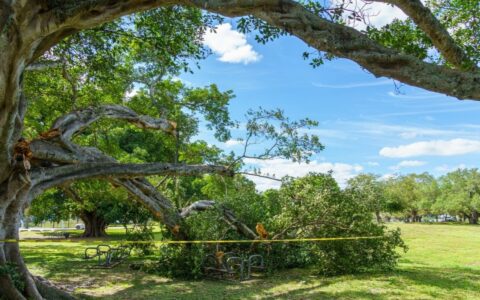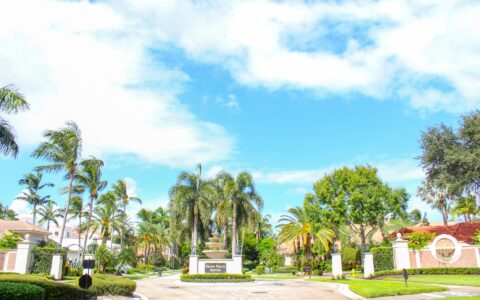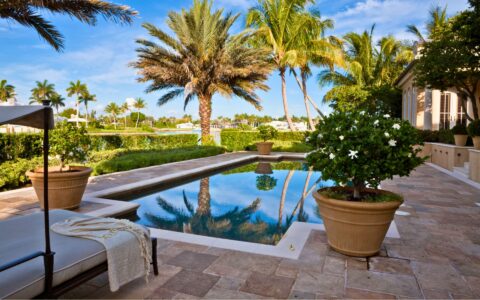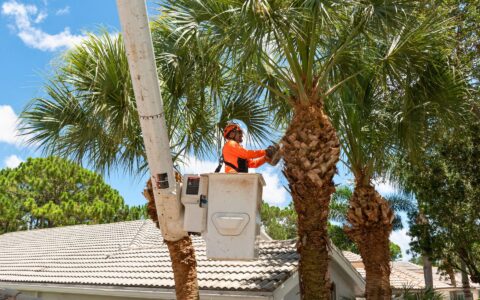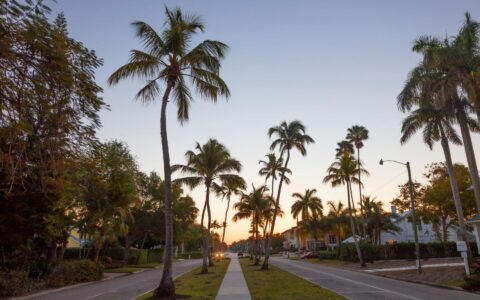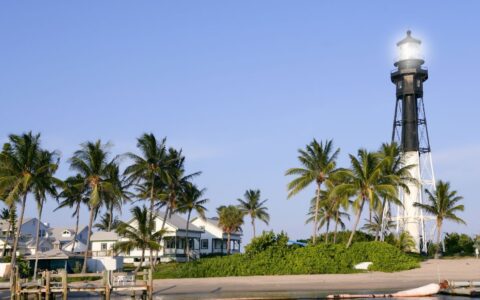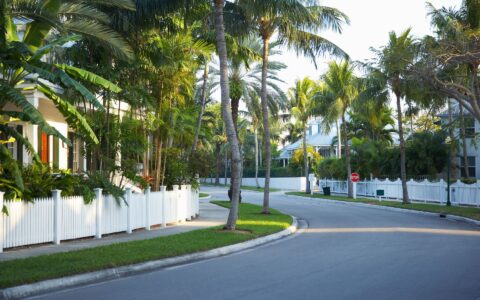With all the benefits that trees provide, we always encourage South Florida residents to plant a tree (or several) if they are able. However, it’s important to choose the right tree! We often see property owners choose a tree that doesn’t fit their needs, or plant a tree in a spot that ends up causing problems.
In this article, we cover the questions that will help you choose a tree that is well-suited for your purposes and that will thrive in the unique setting of your property.
Keep reading to learn how to pick out a tree and how to ensure that the tree you plant on your property has the best chance possible of living a long, healthy life and contributing to your landscape for years to come.
Don’t Plant the Wrong Tree in the Wrong Place!
Imagine this: You’re at a park one day, admiring the tall, majestic trees that are providing shade on a warm day. “I should plant one of these on my property,” you think, and you’re excited by the prospect.
At this point, it’s important to remember a tree planting saying: “right tree, right place.” What this means, essentially, is that not every tree works well in every yard.
Examples of Trees Planted in the Wrong Spot
Most of the trees that we remove are because a tree was planted in the WRONG place. Instances of this include:
- A tree growing too large for the space it was in, leading it to damage nearby buildings, get tangled in power lines, or block traffic views.
- A non-native tree struggling to survive in our warm and humid climate.
- Tree roots disrupting sidewalks, driveways, or buildings because the tree was planted too close to impermeable surfaces and is seeking water.
- Flowering trees not flowering because they aren’t receiving enough sun.
- A tree with thorns planted too close to a walkway, causing injury to passers-by.
- Messy seeds (or flowers, or leaves) that land on a vehicle, outdoor living area, or in a pool.
- Underestimating the mature size of a tree, leading property owners to prune it back more than it should be (or even hatrack it). Eventually, they have to remove it because it didn’t have enough leaves to survive.
- Planting a tree that is plagued by a pest commonly found in our area.
These are just a few of the situations we’ve seen where a property owner or homeowner eventually had to remove a tree that they loved. We know how sad and frustrating it can be to have to cut down a tree just because it was planted somewhere it shouldn’t have been.
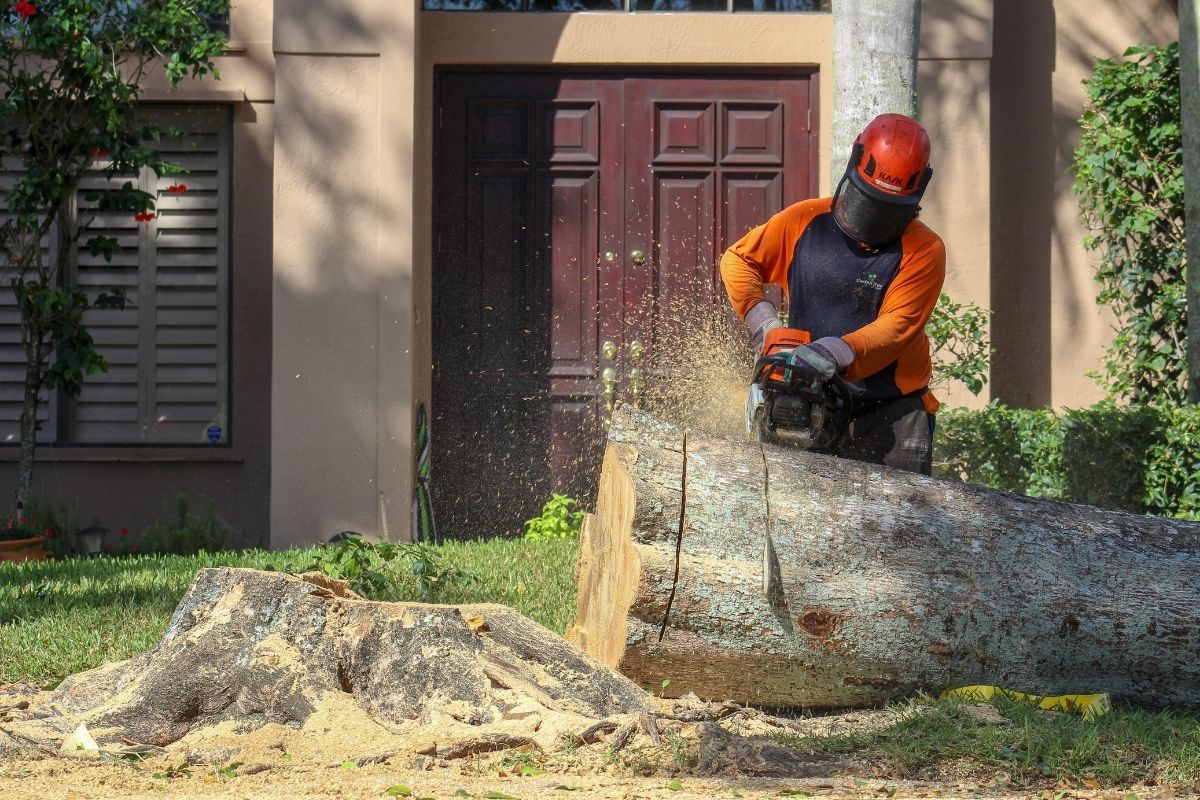
Trees often have to be removed because they were planted in a location that wasn’t suited for them.
How to Choose the Right Tree
Before buying a tree for your property, learn about the key characteristics of the tree and consider how those will fit with your property.
For example, while all trees start out small, many grow to very tall heights. If you look up, do you see anything that could be in the way of the mature tree? Some trees are great for providing shade, while others prefer to grow in shade themselves. How much sun or shade does your yard get?
Here are some questions to ask before you purchase a tree:
- What height and width will this tree grow to?
- Are the roots of this tree known for being invasive?
- Is the tree native or well-adapted to South Florida?
- Do I have the right growing conditions for this tree (amount of sunlight, soil type, etc.)?
- Will this tree produce messy seeds, seed pods, leaves, sap, or flower petals?
- Does this tree have a strong scent (usually from spring flowers)?
- Do I want something that is green all year (evergreen) or something that changes with the seasons (deciduous trees)?
- Do I prefer a fast-growing tree (which is usually more brittle) or a slower-growing tree (which will take more time to reach its full height but generally has stronger wood)?
- Is the tree deer resistant, salt-tolerant, and/or able to withstand Florida’s storms?
- Can the tree tolerate standing water?
- Will the tree (or trees)be planted as a windbreak or property line marker?
- Do I want the tree to provide shade? Fruit? Flowers? Winter interest? Fall colors?
- Is the tree permitted in the local municipality?
Also, think through how you want to tree to work with your lifestyle.
- What’s the purpose of the tree? For example, is it to create privacy, shade your outdoor seating area, muffle the sound of nearby traffic, or create nesting sites for birds?
- How much time, energy, and money do you want to spend on future maintenance for the tree?
- Do you want to do any necessary tree work yourself or will you hire a local tree service?
- How often will the tree need to be pruned, inspected, and/or treated for pests or diseases?
Choosing a Shade Tree
Shade trees are one of the more popular types of trees for all types of properties. They can decrease the temperature of the surrounding area by providing shade from their leafy canopy, and they also cool the air around them through a process called transpiration.
Shade trees that are large and healthy can increase property values as well – especially mature trees. These large trees usually provide the most benefits, both to the environment around them and to the property owner.
>> Shade tree recommendations from the University of Florida
Choosing a Fruit Tree
Fruit trees can serve as a source of food for yourself and your family or for the local wildlife (sometimes even when you don’t want to feed the local wildlife!). Citrus trees are understandably popular here in South Florida, as you can pick fresh oranges, grapefruit, lemons, or other citrus fruits right off the tree.
Other fruit trees can provide berries as food for birds and other wildlife, and several fruit trees have beautiful spring foliage, adding to the beauty of your property.
>> Growing and harvesting citrus information from the University of Florida
Choosing an Ornamental Tree
Flowering trees can be an ornamental tree as well, but other points of interest can include:
- colorful foliage,
- an interesting shape,
- unique bark, or
- colorful fruit.
Ornamental trees are typically shorter than other types of trees, so they may work better under power lines or in small spaces.
Choosing Trees for Hedges
Some types of trees (especially evergreen trees) can be planted as a hedge. This row of trees might serve as a privacy fence, a windbreak, or even to reduce noise – trees can reduce noise pollution from passing cars on a busy highway, for example.
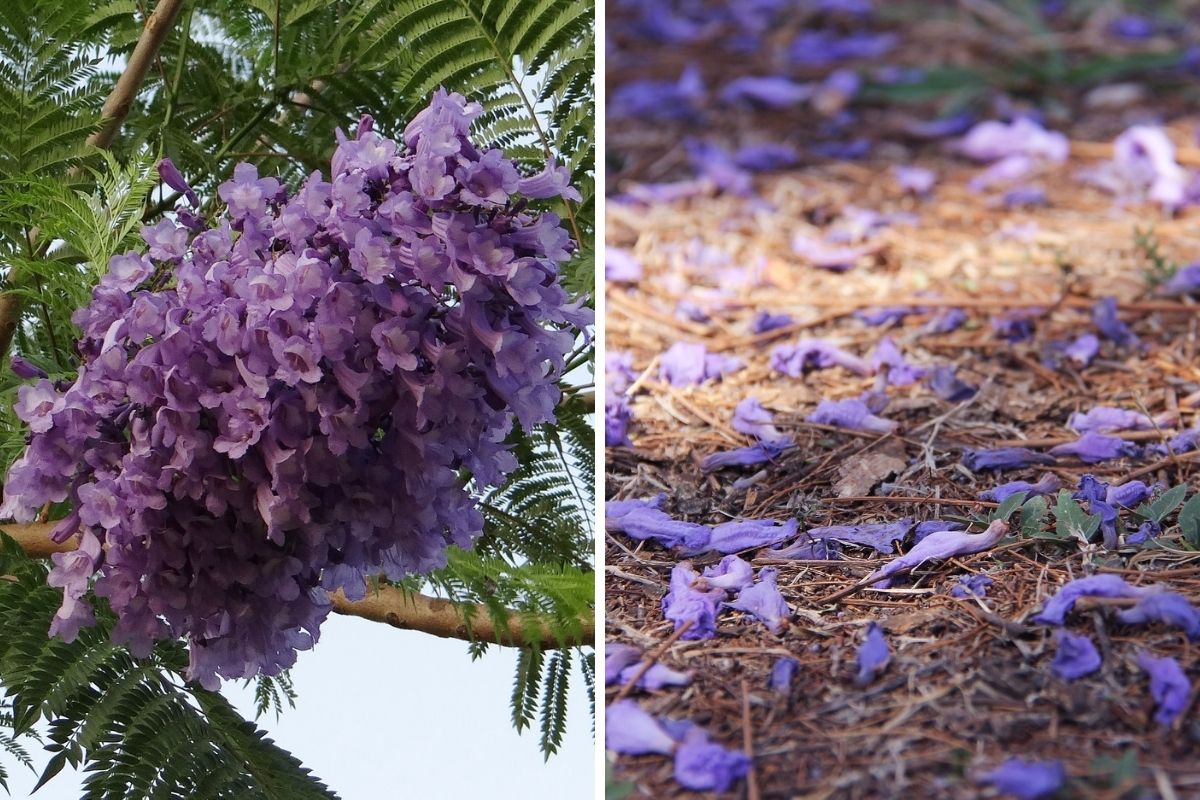
Some trees can produce a lot of “litter,” like these petals from the jacaranda tree. Other types of litter can be seed pods, leaves, or even fragile branches that break frequently.
How to Choose the Right Spot to Plant Your Tree
Just as finding the correct tree for your property depends on asking the right questions, there are just as many things to think through about the location where you plan to plant the tree.
Ask yourself these questions before planting any tree:
- Is the location sunny, partly sunny, or shady? It’s not always easy to accurately determine how much sun a spot really gets. This guide from the University of Florida can help you figure it out.
- Will the spot where I plan to plant be too close to a building, sidewalk, or roadway when the tree is fully-grown?
- Is the planting location close to any sewer lines or other underground pipes?
- Are there utility lines above the planting spot?
- What is the soil like and is it a good match for what the tree needs? (You may need to do a soil analysis to find out.)
- Is there irrigation or an outdoor spigot nearby so the tree can be easily watered?
- Does water tend to pool in the location? Is erosion a problem?
- Does the location get flooded with saltwater? What about salt spray?
- Is the area windy?
- Does your HOA have any rules about where you can plant trees?
- Will the full-grown tree block a view, create too much shade, make mowing difficult, or get in the way of family activities if it’s planted in that location?
If you still have questions about how to choose the right planting spot, this helpful guide from the International Society of Arboriculture (ISA) breaks down what potential issues to look for.
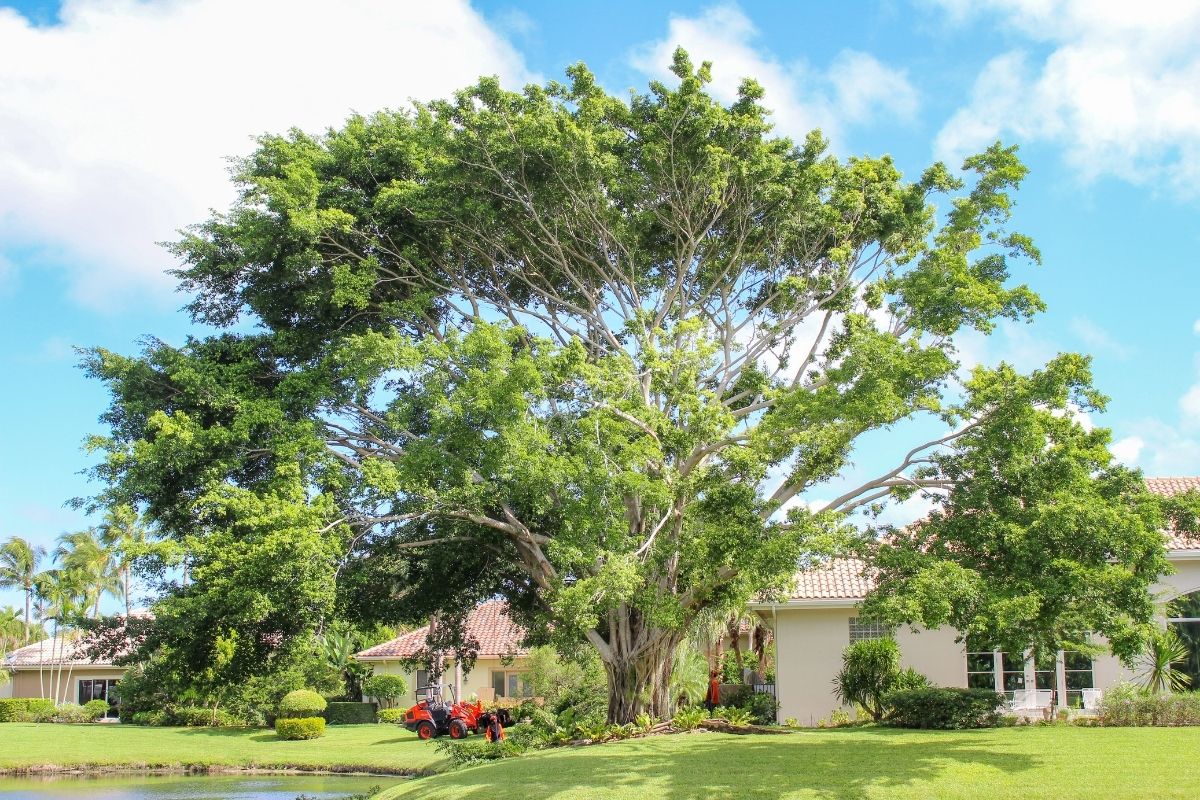
It is important to know how tall (and wide) a tree will grow before you plant it.
Why It’s Important To Plant The Right Tree In The Right Place
Aside from all the potential issues mentioned at the start of this article, the fact is that trees will only grow well and remain healthy if they are planted in the right site conditions.
The University of Florida has a handy site evaluation form that can help you determine the right location for your tree or trees. It covers many of the questions above, such as water needs and soil makeup, but also lifestyle factors, such as your budget for planting and maintaining the tree(s).
Nuisance and Problem Trees to Avoid
Not all trees that grow easily are a good choice. For example, the non-native trees listed below are not allowed in some areas of South Florida. They may be invasive, messy, allergenic, or have invasive root systems.
- Australian pine (Casuarina spp.)
- Brazilian pepper (Schinus terebinthifolius)
- Bischofia (Bischofiajavanica)
- Chinese Tallow Tree (Sapiumsebiferum)
- Cork Tree (Thespesia populnea)
- Ear tree (Enterolobiumcyclocarpum)
- Earleafacaia (Acacia auriculiformis)
- Eucaluptus (Eucalyptus spp.)
- Java Plum (Syzygiumcumini)
- Mahoe (Hibiscus tiliaceus)
- Melaleuca (Melaleuca quinquinervia)
- Non-native Ficus (Ficus spp.)
- Norfolk Island pine (Araucaria heterophylla)
- Schefflera (Brassiaactinophylla)
- Silk oak (Grevillea robusta)
- Tree bamboo (Bambusa vulgaris)
- Woman’s tongue tree (Albizzia lebbeck)
Other Tree Planting Options
As long as you have space and the right situation for a tree to grow, planting trees can be possible on nearly every property.
If, however, you don’t have any space for additional trees on your property, you can always volunteer for local tree-planting programs. Having more trees in your area will benefit you and others by lowering the overall temperature of the area.
Need a Hand?
Need help with your tree planting or with selecting the right tree? Contact Sherlock Tree Company and schedule a property inspection. We can help you determine what tree(s) would work best for your property, show you where to plant it, and explain any maintenance considerations to be aware of. We can even plant it for you!
Call Sherlock for quality tree services
Whether you're looking for specific tree care services, such as palm trimming, tree removal, or disease treatments, or would like one of our Arborists to examine your trees to identify any issues and recommend options, we're always here for you! Just give us a call at 954-788-4000 to set up an appointment.
SEE MORE ARTICLES
Looking for more?
We've got you covered with a monthly newsletter full of tips, resources, updates, how-to's, and other helpful information about trees and landscapes in South Florida!


